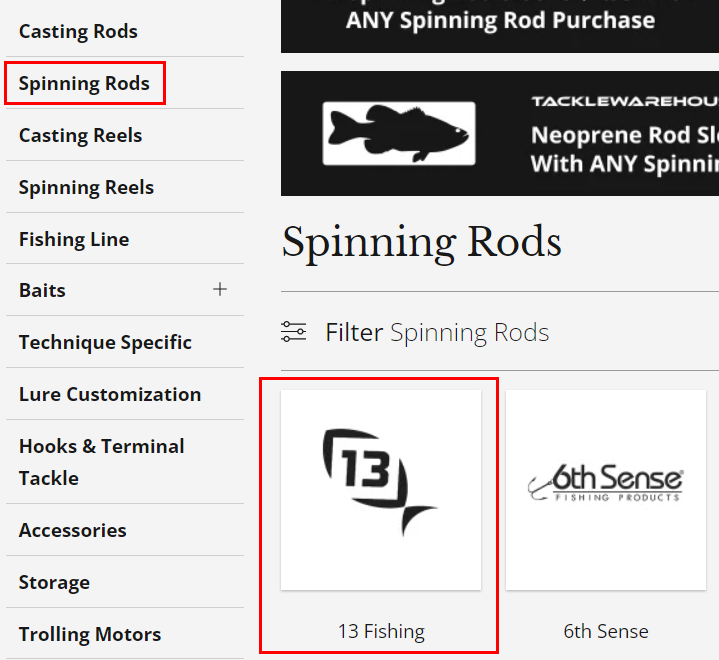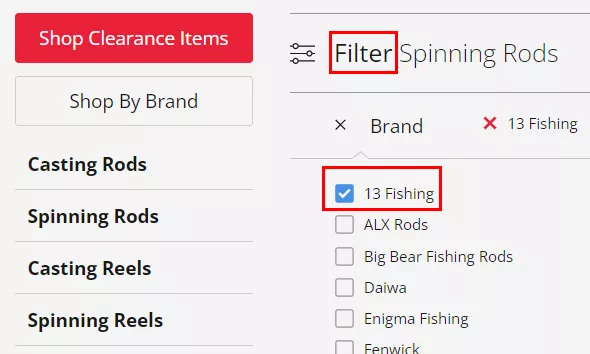The basis of the site is a properly designed structure. In this case, there is no answer to the question of what it should be. It is clear only that for each project it is necessary to select it strictly individually. There are also certain requirements of search engines, which should be followed in any case. Let's talk about this.
What is Website Architecture and What Does It Include?
As the owner of a website, you likely already know that site architecture is important. After all, it's the skeleton of your site that holds everything together. Website architecture is the hierarchical structure of your website pages. In addition, site architecture is the blueprint for your website. It's the foundation upon which your site is built. And just like the foundation of a house, if your website's foundation is not sound, your entire site could come crashing down.
Technology is changing every day, and with it, so is the way we interact with websites. In the early days of the internet, websites were simple pages of text with a few images. Today, websites are much more complex, with dynamic content, audio and video, and interactive features.
To keep up with the demand for more complex websites, website architecture has become more sophisticated. Site architecture includes the overall structure of a website, as well as the individual components that make up that structure.
Website architecture includes:
- Navigation. The most important part of site architecture is navigation. Navigation is the system that allows users to move around a website. It should be easy to use and understand so that users can find the information they are looking for quickly and easily.
- Design of the website. The design should be visually appealing and easy to use. It should also be easy to navigate.
- The content of a website. The content should be relevant and useful to the users of the website. It should also be well-written and easy to understand.
- The technical aspects of a website. This includes the server that hosts the website, the software that runs the website, and the network that connects the website to the internet.
If you are planning to redesign your website or create a new website, it is important to take the time to plan out your website architecture. This will ensure that your website is easy to use and navigate and that it meets the needs of both your visitors and your business.
What is the Logical Structure of the Website?
The logical and optimized site structure is a set of all pages on the site, arranged according to the hierarchy. In other words, the relationship of the pages in which you can trace their belonging to sections, categories, subcategories, and other types of pages (product pages, tags, filters, and so on).
The structure of the site should be constructed in such a way as to make it easy for users to switch from general topics to specific information, for which they came. This affects the comfort of the user, the time he spent on your site, and the target action, which he will do. A complicated navigation system and over-structuring of content will not lead to anything positive.
The Importance of Proper Website Structure for Search Engines
Google has the following recommendations for the site structure:
- Use a logical hierarchy. The user should be able to get to any page of your site. To do this, use navigation bars, known as “breadcrumbs”. They will help the user to find the right section and not get lost on the website. They look like this:
- Use text links, not banners (in the form of images). This will allow search robots to clearly assess the relevance of links, that is, simplify the scanning and analysis of page content on your site.
- Create a navigation page (HTML sitemap) and Sitemap.xml file, where you specify target URLs and dates of recent changes so that Googlebot can find new and changed pages in your structure faster.
- Create informative 404 pages. Place links to the home page and popular sections of the site, so that when the user goes to a non-existent page, he will not leave your site, and continues to search for the necessary information.
- Use friendly URLs instead of parameters. They are more understandable for the visitor, easier to remember, and show what page the user was on.
For example, use https://site.com/product/phone/samsung/ instead of https://site.com/index.php?cat=10&subcat=2&id=41.
- Create a simple catalog structure that makes the site easy to navigate and the URLs reflect the content of the page.
- Use different URLs for different pages. There should be only one unique URL on the site.
You can read more about Google's recommendations in Google help.
Why Do You Need an Optimized Site Structure?
The right structure is important both to the user and the search engines. A brief summary of the main benefits of a properly optimized site structure:
- Better usability. Simple and easy navigation allows the user to find the information they need faster. This will keep them on the site and improve behavioral ranking factors.
- Improving the indexing of pages. The logical structure of the site helps search robots understand which pages are important for the webmaster and the end-user. Optimizers follow the rule of three clicks, where the most important pages should not be located more than 3 clicks from the main page. Otherwise, search engines may not index the page, do it later, or its priority will be very low.
- Reducing the number of technical errors. The proper structure allows you to avoid a large number of duplicate pages, so you can save time and money on promotion.
- Distribution of internal link juice. Link juice is distributed in accordance with the importance of pages. It is important that the promoted pages have a sufficient number of internal links. The more links lead to priority pages, the more important they are for search engines.
- Coverage of a large number of queries. Creating additional sections, categories and landing pages for narrow groups of queries gives the opportunity to be ranked for a large number of keywords. Such pages will be more relevant to a selected narrow group of queries, which will allow you to attract more organic traffic.
Site Structure Types
To understand which structure to use, you need to understand the advantages and disadvantages of each of them. There are 4 common types of structures:
Linear website structure – a scheme of page arrangement in the form of a chain. The user enters the main page, and all subsequent pages leaf through like a book. This structure has no hierarchy and all pages are equal. They are viewed one after another, beginning with the first and ending with the last. It is important that the pages link to each other.
To attract users, such a structure is not very suitable, because you can only promote the home page. Link juice flows from the home page, transferring it to all subsequent pages and finishing on the last page.
It is better to use the linear structure for business card sites, presentation sites, lending, and others.
Linear structure with branches. The same principle as in the linear one, but this one has branches within the chain.
This structure is usually used by small corporate sites, personal blogs, online books, landing pages, business card sites, and others.
Webbed website structures. In this structure, all pages are equal except the main page. All blocks are placed next to each other and linked to several others. Link juice is distributed evenly. This type of page arrangement has a good effect on the indexing of the site.
Webbed website structure is usually used for a specific service or product, where each page describes the characteristics or type of service.
This scheme is not often seen because it is not suitable for every site and is difficult to implement.
Hierarchical website structure (tree model). The most popular and best suited for most sites. Each following page is part of the previous one.
This is the most SEO-friendly website structure, as the multi-level structure allows you to highlight more important pages for promotion.
The universality of the tree structure allows you to apply it to sites of different types. It is used for online stores, information resources, commercial sites, portals, and so on. Understanding these principles is essential for effective SEO website development.
There is also another classification of site structures, in which there are deep and flat website hierarchies. It simply refers to the structural depth of your site.
Deep website architecture is characterized by a large number of pages that are organized into a hierarchy of categories and sub-categories.
This type of architecture for website can be difficult for users to navigate, as they may have to click through several pages to find the information they are looking for.
Flat website architecture, on the other hand, has a smaller number of pages and a shallower hierarchy.
In general, it is better for SEO. This makes it easier for users to find the information they need, as they are not required to click through as many pages.
Which type of site architecture for a website is best for a particular website depends on the nature of the website and the needs of its users. In general, however, flat website architectures are better suited to large websites with a lot of content, while deep site architectures are better suited to smaller websites with a limited amount of content.
Mistakes in creating the structure of the site
It is important not to make mistakes when creating the structure of the site. They can cause a lot of problems for the website owner. Let's look at common mistakes made by webmasters:
The page is optimized for different intents (the meaning that the user puts into the query in the search engine). For example, using Serpstat, we check the frequency of the query “sofas and beds”. We can see that users do not often enter such a phrase in the search:
It would be much more effective if you created a separate “Sofas” page and a “Beds” page:
In this way, you will have two relevant pages on the site and the opportunity to get much more traffic.
Duplicate pages. Let's take the fishing site as an example. The webmaster has created a “Spinning Rods” section, which includes a category called “13 Fishing”:
Also created a filter with the value “13 Fishing”:
Thus, there are two identical pages on the site, which begin to compete with each other in the search results for targeted queries. This leads to poor site ranking, loss of natural link mass, and changes in the relevance of the page in the search engine because the search engine does not understand which page to show for a specific query.
Unclear duplicates. Another common mistake is the so-called “keyword cannibalization”. When specialists for similar groups of queries create different pages on the site.
For example, the site delivery flowers present different pages: inexpensive flowers, cheap flowers, and budget flowers.
Such pages lead to problems with site indexing. This should be taken care of at the stage of keyword research and clustering.
Pages with a high level of nesting. Web pages with a fourth or higher level of nesting are often poorly indexed by search engines. The structure of the site should be designed so that important pages were at most three clicks from the main page. In the case of large sites and online stores, it can not be avoided. For such projects, create a site map and set up a competent internal linking to show users and robots the priority pages.
Absence of a sitemap. The error also affects the speed of indexing pages. For large projects, you need to create two sitemaps:
- for search engine robots – Sitemap.xml file, which is located at the root of the site. It shows to the crawler all the pages required for indexing and reports about the appearance of new pages;
- for users – a separate page with a list of all important pages in a hierarchical order. The purpose of such a page – is to simplify navigation on the site.
For small web resources, the absence of site maps – is not a critical error.
Improper distribution of pages. It is important to create new pages on the site so that they correspond to the semantic load of the previous pages. That is, properly allocated to the appropriate sections and categories. Refrigerators should be in the large household appliances section, not in the plumbing section. But such decisions are not always obvious, for example, should air conditioners be in climate technology or in household appliances?
Conclusion
- The logical structure of the site – this is the basis of your web resource. The success of further interaction of users and search engine crawlers with the site depends on how correctly and qualitatively the structure will be worked out.
- When you create the correct structure of the site you need to follow the recommendations of search engines.
- The advantages of the logical structure:
- increasing of usability;
- acceleration of page indexing;
- reducing the number of technical errors;
- the distribution of internal link juice;
- coverage of a large number of queries.
- The type of structure depends on the type of your site:
- Linear website structure;
- Linear structure with branches;
- Webbed website structures;
- Hierarchical website structure;
- Deep and flat website architecture models.
- Typical mistakes when creating the right structure:
- the page is optimized for different user content;
- duplicate pages;
- unclear redundancies;
- a high level of nesting of pages;
- lack of site maps;
- lack of compliance with the hierarchy of pages.
FAQ
Why is the structure of a website important?
The structure of a website is important because it can help to determine the hierarchy of the information on the site and how the site is organized. A well-structured website can be easier to navigate and can help visitors to find the information they are looking for more quickly and easily.
How to create website architecture?
The structure of a website will vary depending on the nature of the site and its content. However, there are some general principles that can be followed when creating website architecture. First, it is important to think about the overall structure of the site and how the various pages will be interconnected. It is also important to consider the hierarchy of the information on the site and to make sure that the most important information is easy to find and navigate. Finally, it is also important to optimize the website for search engines, so that potential visitors can easily find the site.
How to analyze a website structure?
There are a few different ways that you can analyze a website's structure. One way is to use an HTML sitemap if it is available. Another way is to сreate a mind map based on navigation. Finally, you can also use parsers, for example, Netpeak Spider.
Related Articles
How to Set Up Consent Mode in GA4 on Your Website with Google Tag Manager
Let's explore how to properly integrate consent mode in GA4, configure it for effective data collection, and at the same time comply with GDPR and other legal regulations
Display Advertising Effectiveness Analysis: A Comprehensive Approach to Measuring Its Impact
In this article, I will explain why you shouldn’t underestimate display advertising and how to analyze its impact using Google Analytics 4
Generative Engine Optimization: What Businesses Get From Ranking in SearchGPT
Companies that master SearchGPT SEO and generative engine optimization will capture high-intent traffic from users seeking direct, authoritative answers









